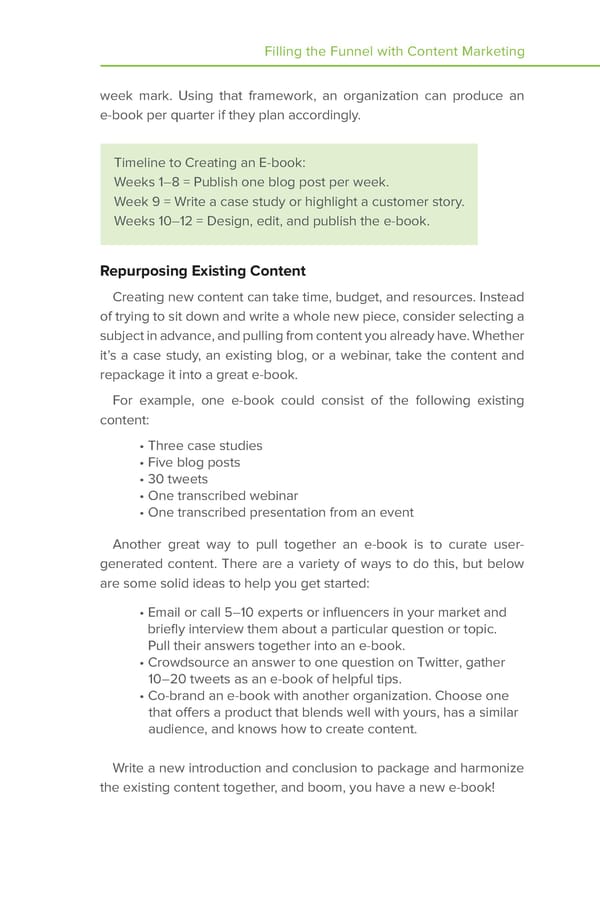Chapter 10 Filling the Funnel with Content Marketing week mark. Using that framework, an organization can produce an e-book per quarter if they plan accordingly. Timeline to Creating an E-book: Weeks 1–8 = Publish one blog post per week. Week 9 = Write a case study or highlight a customer story. Weeks 10–12 = Design, edit, and publish the e-book. Repurposing Existing Content Creating new content can take time, budget, and resources. Instead of trying to sit down and write a whole new piece, consider selecting a subject in advance, and pulling from content you already have. Whether it’s a case study, an existing blog, or a webinar, take the content and repackage it into a great e-book. For example, one e-book could consist of the following existing content: • Three case studies • Five blog posts • 30 tweets • One transcribed webinar • One transcribed presentation from an event Another great way to pull together an e-book is to curate user- generated content. There are a variety of ways to do this, but below are some solid ideas to help you get started: • Email or call 5–10 experts or influencers in your market and briefly interview them about a particular question or topic. Pull their answers together into an e-book. • Crowdsource an answer to one question on Twitter, gather 10–20 tweets as an e-book of helpful tips. • Co-brand an e-book with another organization. Choose one that offers a product that blends well with yours, has a similar audience, and knows how to create content. Write a new introduction and conclusion to package and harmonize the existing content together, and boom, you have a new e-book!
 Filling the Funnel with Content Marketing Page 5 Page 7
Filling the Funnel with Content Marketing Page 5 Page 7